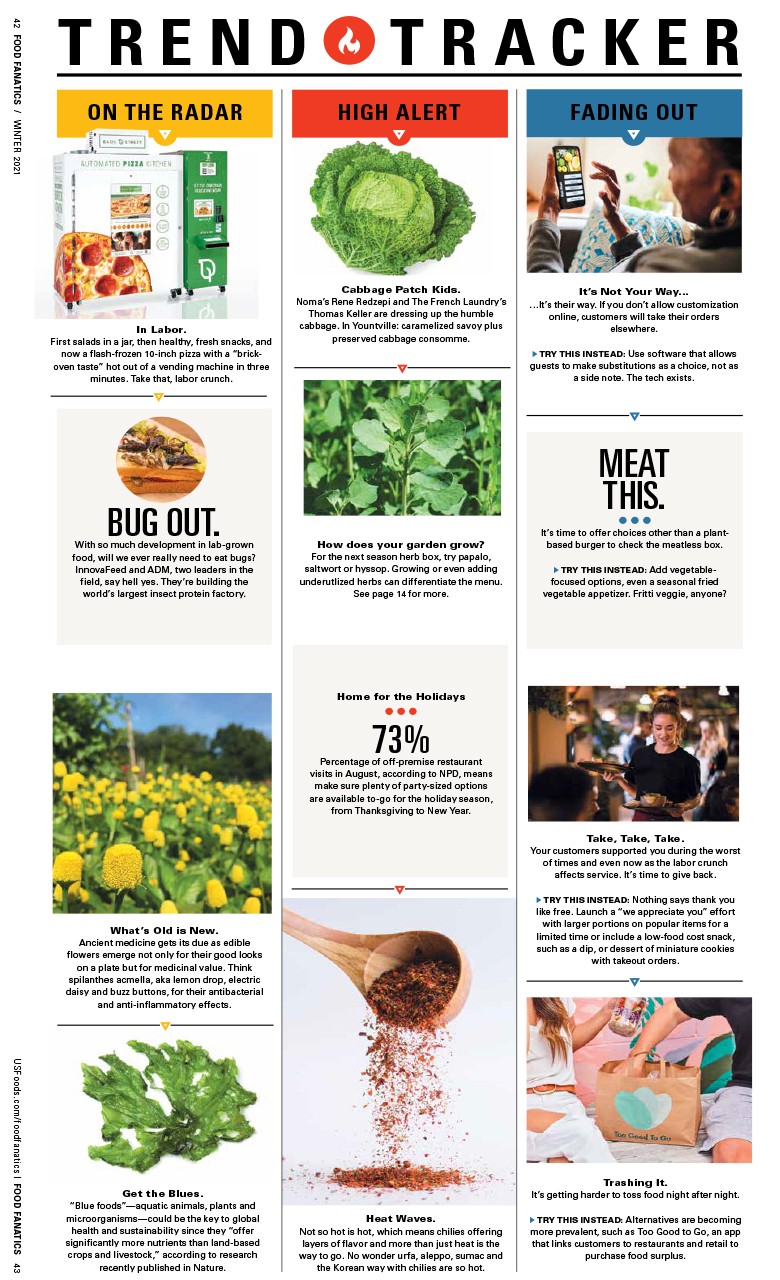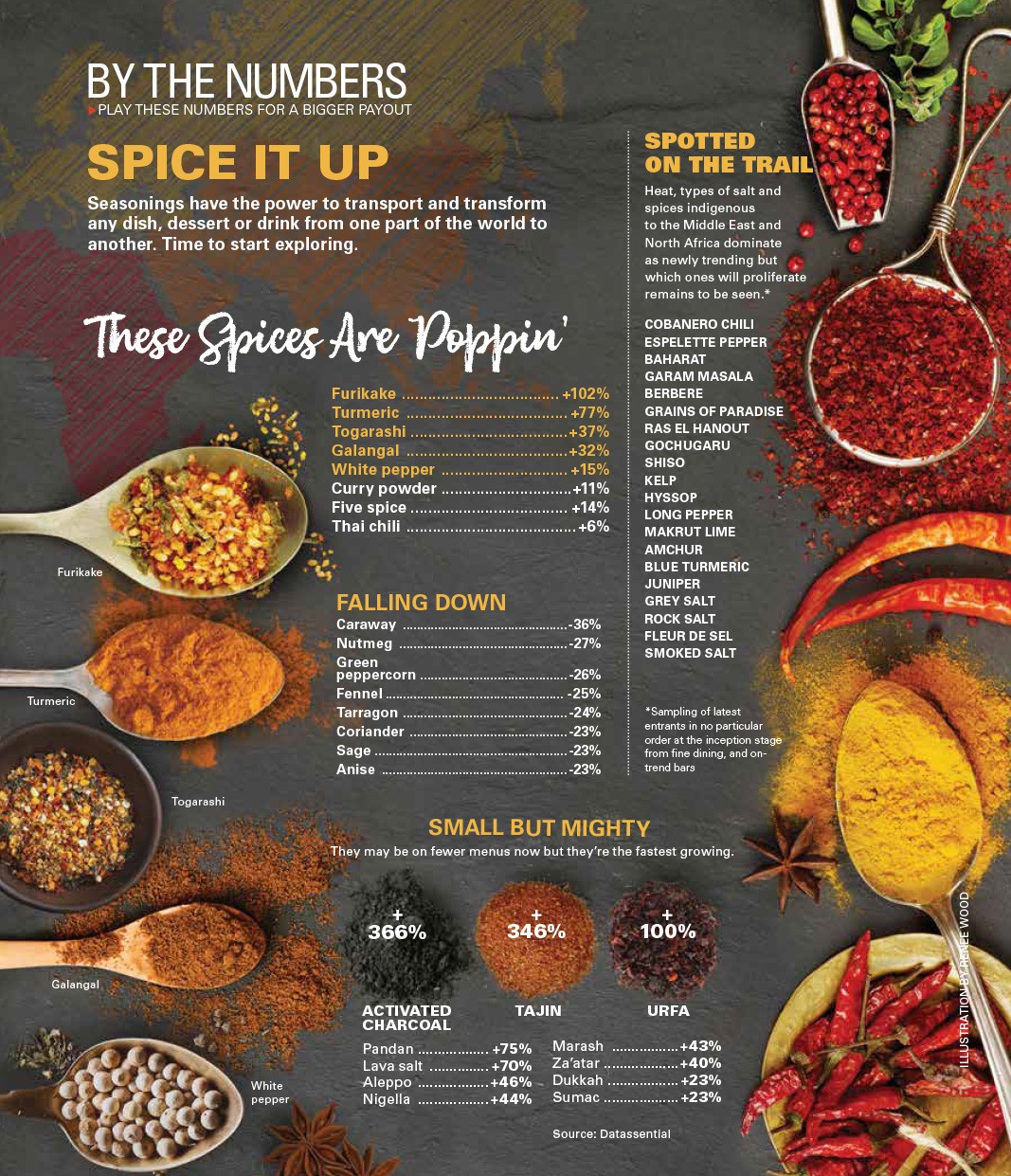Too Good For Cheapskates?
Don't write off guests seeking dining deals.
Penny-pinchers. Cheapskates. Skinflints. No matter the name, these bargain-shopping diners arrive with coupons in hand, scrutinize menu prices and request split entrees. It’s easy to dismiss dime-conscious diners, but that thinking is so pre-recession. Dig into the mind of a penny-pincher and your efforts may be rewarded with loyalty, new customers and priceless word-of-mouth PR.
Customers who are careful with cash cross over multiple dining demographics, says Darren Tristano, executive vice president at Technomic, a foodservice research firm. When it comes to millennials, for example, they’re not trying to be cheap. “Finding affordability allows them to dine out more frequently,” he says.
The middle-income diner on a budget will eat out less frequently, seeking a bargain. The older diner with money will spend more on craft beer, cocktails and other unique items, while simultaneously appreciating a deal, Tristano says. Women are looking for value through smaller plates—they don’t want big and indulgent portions, he adds.
79% of adults would dine out more frequently if prices were lower during off-peak times.
-National Restaurant Association 2013 survey
“The challenge,” says Adam Goldgell, executive chef at Reel in East Rockaway, New York, “is to be approachable to as many people as you can without compromising what you do or cheapening the quality.”
The best thing about a cheapskate? They don’t necessarily dine with fellow penny-pinchers so don’t dismiss customers looking for value, Goldgell adds.
Become Known for a Weekly Deal
At Reel, a mid-priced, traditional seafood restaurant with international twists, Goldgell created Mussel Beach Mondays, featuring four types of all-you-can-eat mussels for $16. Even with a drink, it’s an inexpensive meal, well below the restaurant’s regular $40 check average. But when other people in the party don’t want mussels and prefer not to share an appetizer or split dessert, a traditionally slow Monday turns into a higher traffic weeknight.
Similarly, at Dark Horse Restaurant, a New American bistro in Riverhead, New York, Chef-owner Dee Muma offers a Wednesday night beer and burger special for $10. The meal includes a six-ounce bison or beef burger, club fries and a local craft beer.
“Once we get people in the door, they will come back,” Muma says. “It’s a loss leader, but it has purpose because people talk about it and go out with a perceived sense of value. It’s better than advertising.”
Embrace the Stingy
“I exist for the penny-pinchers because I offer the best food I can, made from scratch at great prices, so it’s a good value,” says Lisa Schroeder, executive chef and owner of Mother’s Bistro & Bar in Portland, Oregon.
"The challenge is to be approachable to as many people as you can without compromising what you do or cheapening the quality."
-Adam Goldgell
In business for 14 years, Schroeder keeps a watchful eye on dining trends and makes them work for her. Mother’s is known for large plates of homestyle comfort food. Still, one year ago, Schroeder began offering half portions of her signature dishes. “It allows people who are pinching pennies to spend less and watch what they eat,” she says.
As a result, customers sometimes order more than one dish, actually increasing the check average. “It provides variety and gives people a sense control,” Schroeder says.
Try Strategic Online Deals
Jim Solomon, chef-owner of The Fireplace in Brookline, Massachusetts, occasionally offers discounts through Groupon or LivingSocial. Usually, it’s when he needs to raise cash for an immediate expense, like the $48,000 intake/outtake air balancing unit he purchased for the restaurant.
He sees potential in these short-term deals, even though other chef-owners steer clear of them. “While 70 percent of those people might be deal hunters and never come back, the other 30 percent might turn into clients,” he says.
Solomon trains staff to understand the value of treating these customers as well as any other paying customer. “Even if you happen to be waiting on the kind of cheapskate that really frustrates you, it behooves you to treat them like royalty because they may go onto Facebook and Twitter and rave about their experiences,” he says. “So the fact that they might not tip or come back until another deal is irrelevant.”
That said, chefs who find success with online deals see them as a marketing tactic. They collect contact information from customers and have a plan to follow up.
Consider Prix Fixe
At Catch, a modern seafood restaurant in Wilmington, North Carolina, Chef-owner Keith Rhodes provides a $25 prix fixe menu alongside his core menu Monday through Wednesday nights. While some diners may perceive prix fixe to mean lesser quality or smaller portions, Rhodes strongly disagrees. “The prix fixe items are not our worst things but our best,” he says. “It allows us to be super creative because I want to entice you to eat it.”
The price difference between the prix fixe menu and a la carte, which can easily run upwards of $60, is significant.
Everyone Enjoys a Great Deal
Like at so many places, business slows at the Dark Horse after Christmas and New Year’s. So in December, customers receive envelopes containing discounts on their next meal. The catch? They must come in within 30 days and the envelopes must stay sealed to be opened with their servers. There was a huge response last winter, Muma says. “They loved it.”
When Mother’s Bistro began offering breakfast, Schroeder sent customers a gift certificate for a free meal on her. “I knew that everyone would bring someone,” she says, adding that the promotion turned people on to weekday breakfasts.
No Two Cheapskates Are Alike
Tightwads aren’t cheap across the board; some frugal diners simply choose to spend their money differently. “There are affluent people who are cheap,” Solomon says. “If they are wine and spirit lovers, they may come out to a high-end, exclusive wine event.” Those same clients may bring along friends who spend more money on food.
To that end, from September to June, The Fireplace hosts “fireside chats” every other Saturday at 3 p.m.
“It’s an otherwise dead time in the restaurant,” he says. At these events, guests learn about a particular type of wine, single malt Scotch whisky or single barrel bourbon, while enjoying light food pairings, for about $25 to $30 a person.
“If you’re a snobby owner who thinks you have no time for a cheap diner, you’re foolish,” Solomon says.
Emily Rogan is a New York-based health, food and education writer who runs marathons and dines out as often as possible.



